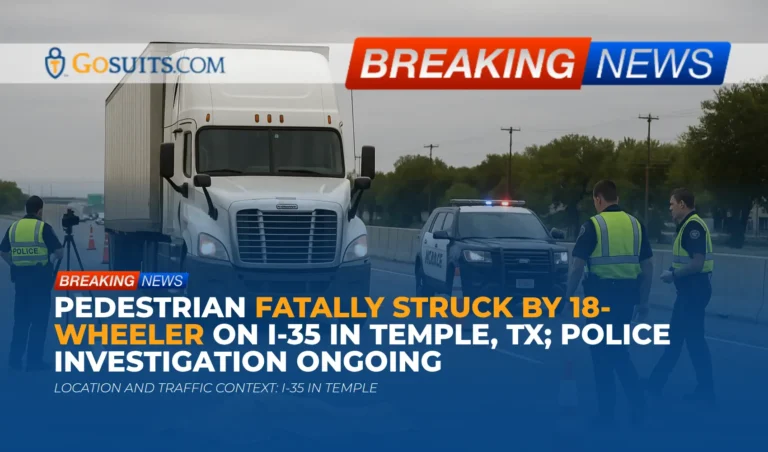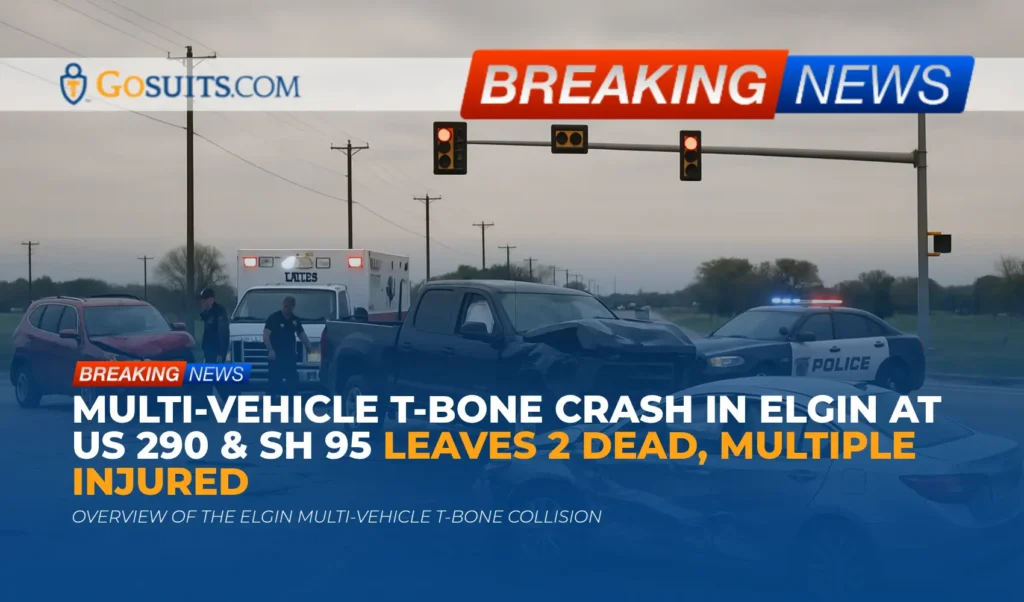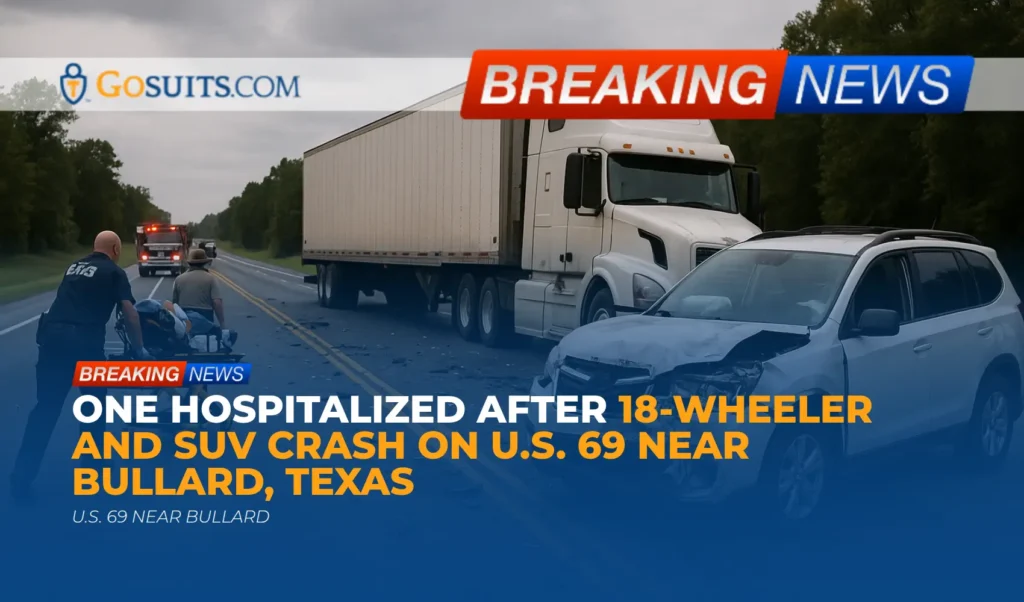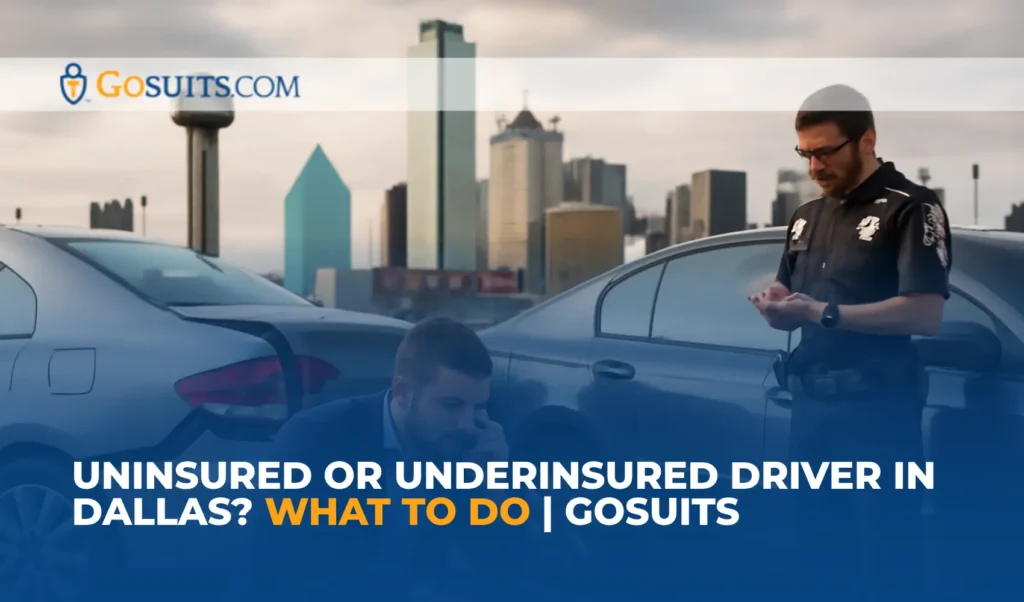- Incident overview and known facts
- Location and traffic context: I-35 in Temple
- What investigators examine after a fatal truck-pedestrian crash
- Legal framework in Texas: pedestrian rules, trucks, and liability
- Potential civil claims and avenues for recovery in Texas
- What evidence matters and how it is preserved
- Where families can obtain official records
- Practical steps in the first days and weeks
- Insurance issues after an 18-wheeler crash
- Community safety considerations for highways and pedestrians
- Commentary from Gosuits Temple, Texas Personal Injury Attorney
- Sources and helpful government links
- Action steps to consider now
Incident overview and known facts
According to information shared by local authorities, a pedestrian was struck and killed by an 18-wheeler on Interstate 35 in Temple, Texas. The crash occurred Monday afternoon at approximately 3:38 p.m. near exit 298 southbound. Police indicate the individual had been attempting to cross the interstate when the collision happened. The driver of the 18-wheeler remained at the scene. No other injuries were reported.
The Temple Police Department’s Traffic Reconstruction Unit is investigating. Officials announced that a portion of the southbound lanes would be closed for several hours during the on-scene investigation and asked drivers to exit before exit 299 southbound and use alternate routes. The case remains under investigation.
Authorities asked that anyone with information call the Temple Police Department at 254-298-5500 or Bell County Crime Stoppers at 254-526-8477. Tips may also be shared anonymously through local Crime Stoppers channels.
We extend our sincere condolences to the family and friends affected by this tragedy. The information below is intended to help community members understand the process that often follows a fatal commercial truck-pedestrian crash, what records exist, and how Texas law may apply.
Location and traffic context: I-35 in Temple
Interstate 35 is a major north-south corridor through Central Texas. In the Temple area, I-35 carries substantial passenger and commercial truck traffic. Speeds are high, lanes are wide, and access is limited to interchanges. These features make interstates efficient for long-distance travel, but extremely hazardous for pedestrians. Even short distances on foot along or across interstate lanes can be life-threatening due to high speeds, limited stopping distances, and sightline issues for drivers and pedestrians alike.
When a fatal crash occurs on a limited-access highway, law enforcement typically closes affected lanes to ensure scene safety, protect first responders, and allow for detailed crash reconstruction. Closures of several hours are not unusual in fatal incidents that require measurements, photos, electronic data collection, and coordination with inquest authorities.
What investigators examine after a fatal truck-pedestrian crash
Temple Police Department’s Traffic Reconstruction Unit will generally follow a structured process to understand how and why a crash occurred. While each case is unique, typical areas of focus include:
- Scene documentation: Measurements of lanes and shoulders, road grade, skid or yaw marks, debris fields, final rest positions, and visibility conditions. Photographs and laser mapping may be used.
- Vehicle condition and onboard data: Commercial trucks may have event data from engine control modules and modern safety systems. Investigators often look at brake condition, lighting, conspicuity markings, and any dash camera or fleet telematics that may show speed, hard braking, lane position, and forward-facing video.
- Driver factors: Statements, distraction indicators, and fatigue are considered. For commercial drivers, investigators may request records subject to federal rules, such as hours-of-service logs, pre-trip inspections, and maintenance records collected by carriers under federal regulations.
- Pedestrian factors: Point of entry to the roadway, walking direction, clothing visibility, and any circumstances that may have led to the pedestrian being in a limited-access area.
- Environmental conditions: Time of day and lighting, traffic volume, weather, and construction zones or closures that may alter typical traffic patterns.
- Inquest and cause of death determinations: In fatal incidents, Texas law requires an inquest, often conducted by a justice of the peace or medical examiner. Autopsy and toxicology findings are part of the official record in the event of an autopsy order.
This process takes time. Families are often notified early, but some records will not be immediately available. Below, we explain which records exist and how they can be obtained in Texas.
Legal framework in Texas: pedestrian rules, trucks, and liability
Texas roadway rules for pedestrians
Texas rules for pedestrians are set out in state law. Generally, pedestrians must use crosswalks where available, obey pedestrian signals, and yield to vehicles when crossing outside of crosswalks. Importantly for this incident, Texas law places restrictions on pedestrians along or across limited-access highways. Interstates are designed for motor vehicles traveling at high speed, and walking along or across their lanes is highly dangerous and usually prohibited. The Texas Transportation Code’s pedestrian chapter provides the baseline rules that can be relevant after a crash.
Reference: Texas Transportation Code, Chapter 552 (Pedestrians).
Commercial truck duties under federal safety rules
Commercial motor vehicle drivers and their motor carriers operate under federal safety regulations. These rules cover areas such as:
- Driver qualifications and duty status (hours-of-service rules limit driving time to address fatigue)
- Safe operation practices (prohibitions on reckless driving, distraction, and impaired operation)
- Vehicle inspection, repair, and maintenance (pre-trip inspections and carrier maintenance programs)
Where relevant, investigators and civil attorneys may review compliance with these rules to understand whether any safety lapses contributed to a crash. Federal regulations are administered by the Federal Motor Carrier Safety Administration.
Comparative responsibility in Texas
Texas uses a modified comparative responsibility approach in most civil injury and wrongful death cases. If a case proceeds in civil court, a jury may be asked to assign percentages of responsibility among involved parties based on the evidence. A claimant who is found more than 50 percent responsible typically cannot recover damages, while recoveries are reduced by a claimant’s percentage of responsibility at or below that threshold.
This system means liability in pedestrian-highway cases can be complex. The fact that a pedestrian was on an interstate may be important, but it does not automatically resolve questions about a truck driver’s speed, lookout, lighting, or other factors. Each case turns on specific facts and evidence.
Potential civil claims and avenues for recovery in Texas
Wrongful death and survival actions
Texas law provides two primary civil pathways when a person dies due to the alleged wrongful act, neglect, carelessness, unskillfulness, or default of another:
- Wrongful death actions may be brought by certain surviving family members to address losses they suffer from the death, such as loss of companionship and pecuniary contributions, when supported by the law and facts.
- Survival actions belong to the estate and address claims the decedent could have brought had they survived, such as conscious pain and mental anguish before death, and medical expenses incurred before passing, if applicable.
Reference: Texas Civil Practice and Remedies Code, Chapter 71 (Wrongful Death; Survival).
Statute of limitations considerations
Texas generally sets a two-year limitations period for personal injury and wrongful death claims arising in tort. Calculating time limits can be fact dependent and subject to specific statutory rules. Preserving claims timely is important because key evidence can be lost or overwritten within days or weeks of a crash.
Reference: Texas Civil Practice and Remedies Code, Chapter 16 (Limitations), including Section 16.003.
Insurance and potential sources of coverage
Commercial 18-wheeler operations are commonly backed by significant liability insurance, sometimes layered among primary and excess policies. There may also be other coverages potentially implicated depending on the facts, such as uninsured motorist (if applicable to a non-truck vehicle involved), cargo or trailer ownership issues, or roadway contractors if construction zones are involved. Identifying all potentially responsible parties and their insurers often requires early, focused investigation.

What evidence matters and how it is preserved
After a fatal highway crash, key evidence can be fragile. Some information is automatically overwritten by normal business operations if it is not preserved promptly. Important categories include:
- Commercial carrier records: Hours-of-service logs, electronic logging device data, dispatch communications, GPS/telematics, driver qualification file, and maintenance records. Federal rules impose specific retention periods, and some records may be kept only for months unless preservation is requested.
- Vehicle electronic data: Engine control module data and event data recorder snapshots of speed, throttle, and braking can be crucial to reconstructing events.
- Video evidence: Dash cameras on trucks, roadway cameras, and nearby commercial surveillance can provide objective timelines. Many systems auto-delete after days or weeks.
- Scene evidence: Skid marks, gouge marks, debris fields, and lighting conditions at the same time of day. Prompt documentation matters because traffic and weather can erase traces.
- Witness accounts: Locating and interviewing witnesses early can preserve details that fade with time.
Families or their representatives often send a written preservation letter requesting that involved companies retain relevant data and physical evidence. Commercial carriers are accustomed to these requests and generally route them to their risk management teams and insurers.
Federal safety rules administered by the FMCSA address driver hours, inspection and maintenance, and records retention. For example, carriers must keep records of driver duty status for a limited period, and maintenance files must be maintained for specific timeframes. Understanding these windows underscores why early action helps protect critical evidence.
Where families can obtain official records
Temple Police Department reports
Crash reports and supplemental investigative documents are often available through the local police records unit or Texas’s statewide crash records system once finalized. Families can request a copy of the official crash report through:
- Temple Police Department Records: The City of Temple maintains public records request procedures on its official website. Visit the City of Temple site at templetx.gov to find police records or open records request instructions.
- TxDOT Crash Records: Texas Department of Transportation manages statewide crash report access. TxDOT provides information on obtaining crash reports through its website. See txdot.gov and search for Crash Records or Crash Reports for the current process.
Note that crash reconstruction supplements, photographs, and certain investigative materials may have limited release during an open investigation under Texas Public Information Act provisions. The police department can explain what is available and when.
Inquest, autopsy, and death records
Texas law requires an inquest for many unattended or traumatic deaths. Depending on the county, an elected justice of the peace or a medical examiner conducts the inquest and may order an autopsy. Families typically receive notification from the authority that handled the inquest. To request information:
- Inquest and autopsy reports: Refer to the inquest authority listed on the death notification. In Texas, inquests and autopsies are governed by the Code of Criminal Procedure, Chapter 49. Availability and timing of records can vary while investigations are active.
- Death certificate: Death records are managed by the Texas Department of State Health Services. Qualified applicants can obtain certified copies through the state’s Vital Statistics Section. See Texas DSHS Vital Statistics: Death Records.
Public information requests in Texas
Texas has statewide rules for requesting public records. The Office of the Attorney General provides guidance on making requests and what to expect. This can be helpful if you need crash reports, 911 audio, or agency correspondence. For guidance, visit the Attorney General’s page on filing public information requests at texasattorneygeneral.gov.
How to share information with investigators
Temple Police Department encouraged anyone with information to call 254-298-5500. Information can also be provided to Bell County Crime Stoppers at 254-526-8477 through anonymous tip options.
Practical steps in the first days and weeks
After a sudden loss, it can be overwhelming to manage practical needs, questions from insurers, and the pace of an unfolding investigation. The following steps aim to provide clarity and reduce the risk of losing important information:
- Identify the inquest authority: Determine which office handled the inquest and whether an autopsy was ordered. Keep copies of any notifications and case numbers.
- Request the crash report when available: Note the police report number and check with the Temple Police Department’s records unit for availability. Also note when a final crash reconstruction report may be released.
- Preserve communications: Save voicemails, letters, and emails from trucking companies, insurers, and agencies. If anyone requests a recorded statement, consider seeking legal guidance before speaking on the record. What is said can be used later and may affect civil claims.
- Document expenses and arrangements: Keep receipts for funeral arrangements, travel, and related costs. If Texas’s Crime Victims’ Compensation Program applies, documentation will be important.
- Record witness information: If you know of anyone who saw the incident or aftermath, write down their full name, contact details, and what they observed. Time-sensitive recollections fade quickly.
- Note potential video sources: Jot down nearby businesses, highway cameras, or vehicles that may have dashcam footage. Many systems overwrite video within days.
- Avoid social media speculation: Public comments can complicate later proceedings. Consider keeping updates private and factual until more is known.
Insurance issues after an 18-wheeler crash
Commercial trucking claims can be very different from typical passenger car crashes. Carriers often have established rapid-response teams and insurers who act immediately after an incident to gather statements and evidence. It is common for insurance representatives to request recorded statements and authorizations early. Consider the following:
- Speak with an attorney before calling any insurance company: A free consultation can help explain rights and obligations. Statements given to insurers may be used later, and authorizations can open sensitive records beyond what is necessary.
- Expect a focus on fault percentages: In Texas’s comparative responsibility system, insurers assess not just whether their driver was negligent but also whether another person’s decisions contributed. This can directly influence any settlement discussions.
- Watch for early settlement overtures: Early proposals sometimes come before full evidence is available, including vehicle data, maintenance files, or video. Premature agreements can close the door on later findings.
- Multiple insurers may be involved: Tractor, trailer, motor carrier, and logistics entities may have separate coverage. Coordination and identification of all policies is important.
Community safety considerations for highways and pedestrians
Pedestrian presence on interstates is extremely dangerous. Federal and state safety data show that pedestrian fatalities have been a growing share of overall traffic deaths in recent years, and the risks are amplified on high-speed, limited-access highways. Texas agencies stress that pedestrians should avoid walking along or across freeway lanes and use designated crossings and assistance where possible. At night or in low visibility, the risk increases further due to reduced detection distances for drivers and the longer stopping distances for heavy trucks.
Truck drivers also face unique challenges. Large commercial vehicles have longer stopping distances, wide turning radii, and substantial blind areas around the cab and trailer. Even a fully attentive driver may not be able to stop in time if a pedestrian suddenly appears in a travel lane at highway speed. Safety education from federal agencies emphasizes maintaining proper speed, scanning ahead, and being prepared for unexpected hazards.
Community-level measures that can reduce risk include physical barriers that deter pedestrian crossings at freeways, improved lighting near interchanges, clear signage, and safe access routes for individuals who may otherwise attempt dangerous crossings. Public awareness efforts about the dangers of walking near interstate lanes also play a role.

Commentary from Gosuits Temple, Texas Personal Injury Attorney
We are deeply sorry for the loss reported on I-35. For those affected, please know this discussion is provided for general information and education about what often follows a fatal highway crash. Grief and unanswered questions can be overwhelming, and it is understandable to want clear, factual guidance.
Incidents on interstates are among the most severe because speeds are high and reaction time is short. Pedestrians on limited-access highways face extraordinary danger. At the same time, commercial trucking operations carry responsibilities under both state and federal rules. In any fatal event, it is important that a thorough, unbiased investigation be completed so the truth is documented. That process typically includes examination of truck data, driver logs, maintenance history, lighting, sight distance, and scene conditions, together with inquest findings.
Insurance companies and large corporations are experienced with these situations. They move quickly to collect statements and evidence, and they are incentivized to minimize their exposure. People unfamiliar with insurance procedures may feel pressured to provide recorded statements or broad record authorizations before they have had a chance to understand their rights or the full scope of evidence. What is said early can be used later and may limit options. This imbalance is why having a knowledgeable advocate matters, even in the earliest days.
Obtaining a free consultation before speaking to any insurer can provide clarity on timelines, preservation of evidence, and how Texas rules on comparative responsibility may affect outcomes. It does not obligate anyone to take legal action; it simply helps ensure decisions are informed rather than rushed.
Sources and helpful government links
- Texas Transportation Code, Chapter 552 (Pedestrians)
- Texas Department of Transportation (TxDOT) – Crash Records and Safety Information
- City of Temple – Police and Public Records
- Federal Motor Carrier Safety Administration – Regulations overview
- Texas Civil Practice and Remedies Code, Chapter 33 (Proportionate Responsibility)
- Texas Civil Practice and Remedies Code, Chapter 71 (Wrongful Death; Survival)
- Texas Civil Practice and Remedies Code, Chapter 16 (Limitations)
- Texas Code of Criminal Procedure, Chapter 49 (Inquests; Autopsies)
- Texas Department of State Health Services – Death Records
- Texas Attorney General – Public Information Requests
Note: General pedestrian and truck safety guidance is also available through TxDOT and federal transportation agencies. If you need help locating a specific safety or data page, a public records officer at the City of Temple or TxDOT can point you to the right resource.
Action steps to consider now
- Secure official report numbers: Record the Temple Police Department case number, the date and time of the crash, and any responding agency identifiers. This makes future records requests faster and more accurate.
- Confirm the inquest authority: Identify the justice of the peace or medical examiner handling the inquest and ask about the anticipated timeline for any autopsy or inquest report release.
- Preserve evidence immediately: Send written preservation requests to the motor carrier and any known insurers asking them to retain vehicle electronic data, driver logs, telematics, dashcam video, and maintenance files. Evidence can be overwritten within days or weeks.
- Collect potential video sources: Note nearby businesses, highway cameras, or vehicles that might have relevant footage. Politely request that they hold footage pending a formal request.
- Organize documentation: Keep all communications, medical and funeral records, and expense receipts in a dedicated folder. This supports potential claims for reimbursement under applicable Texas law.
- Avoid recorded statements to insurers before getting guidance: Statements can be used later and may affect available options. Speaking with a seasoned attorney first helps ensure decisions are informed.
- Calendar key timeframes: Note anticipated release dates for the crash report, inquest findings, and any agency updates. Also note the general two-year limitations window in Texas so critical deadlines are not missed.
- Seek a free consultation: A no-cost case evaluation can clarify rights, explain the investigative process, and outline next steps without pressure to proceed. Early guidance can prevent missteps that are hard to fix later.
Why acting promptly matters: Commercial carriers and insurers begin their investigations immediately, and some electronic records are retained only for short periods by default. Early steps can preserve critical data, ensure accurate information flows to investigators, and reduce the risk of decisions made under pressure that might limit future options. Timely action also supports community safety by helping authorities fully understand what happened and whether any systemic issues need attention.






